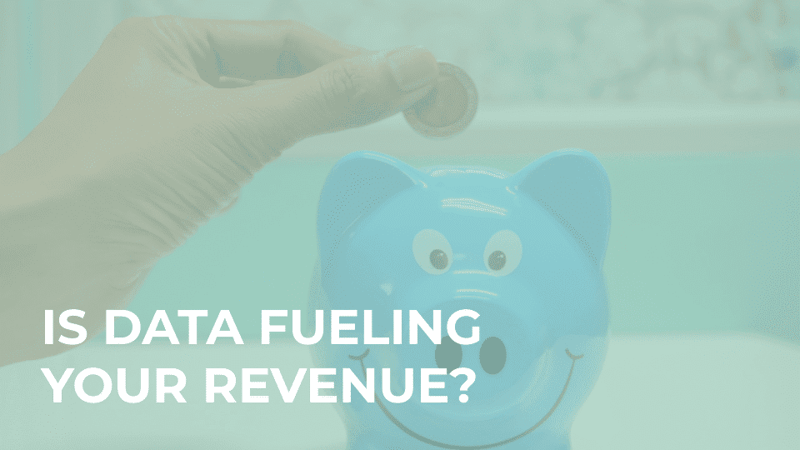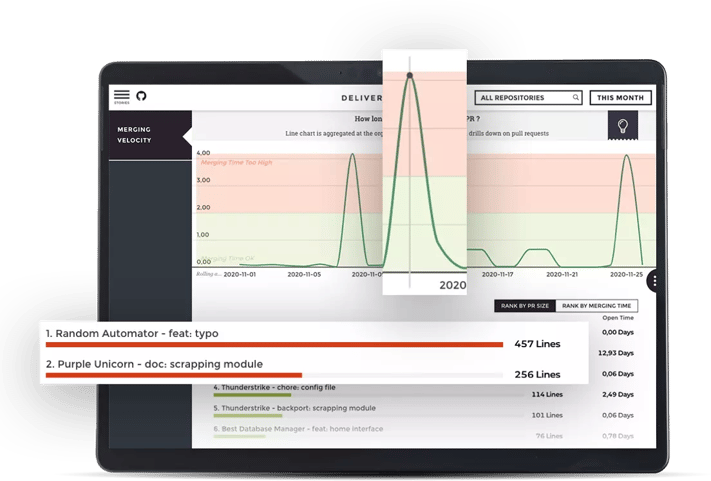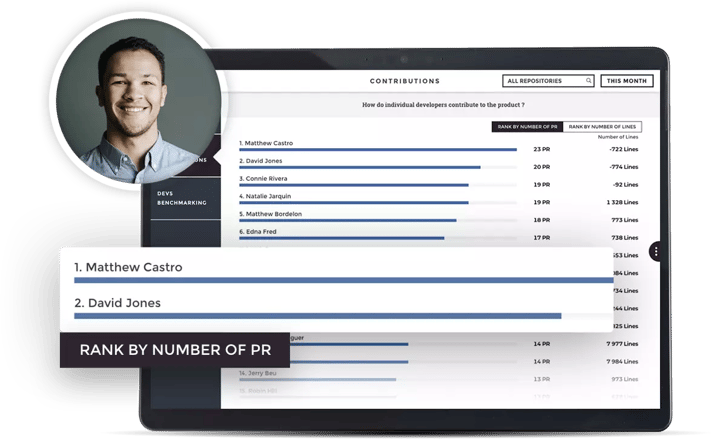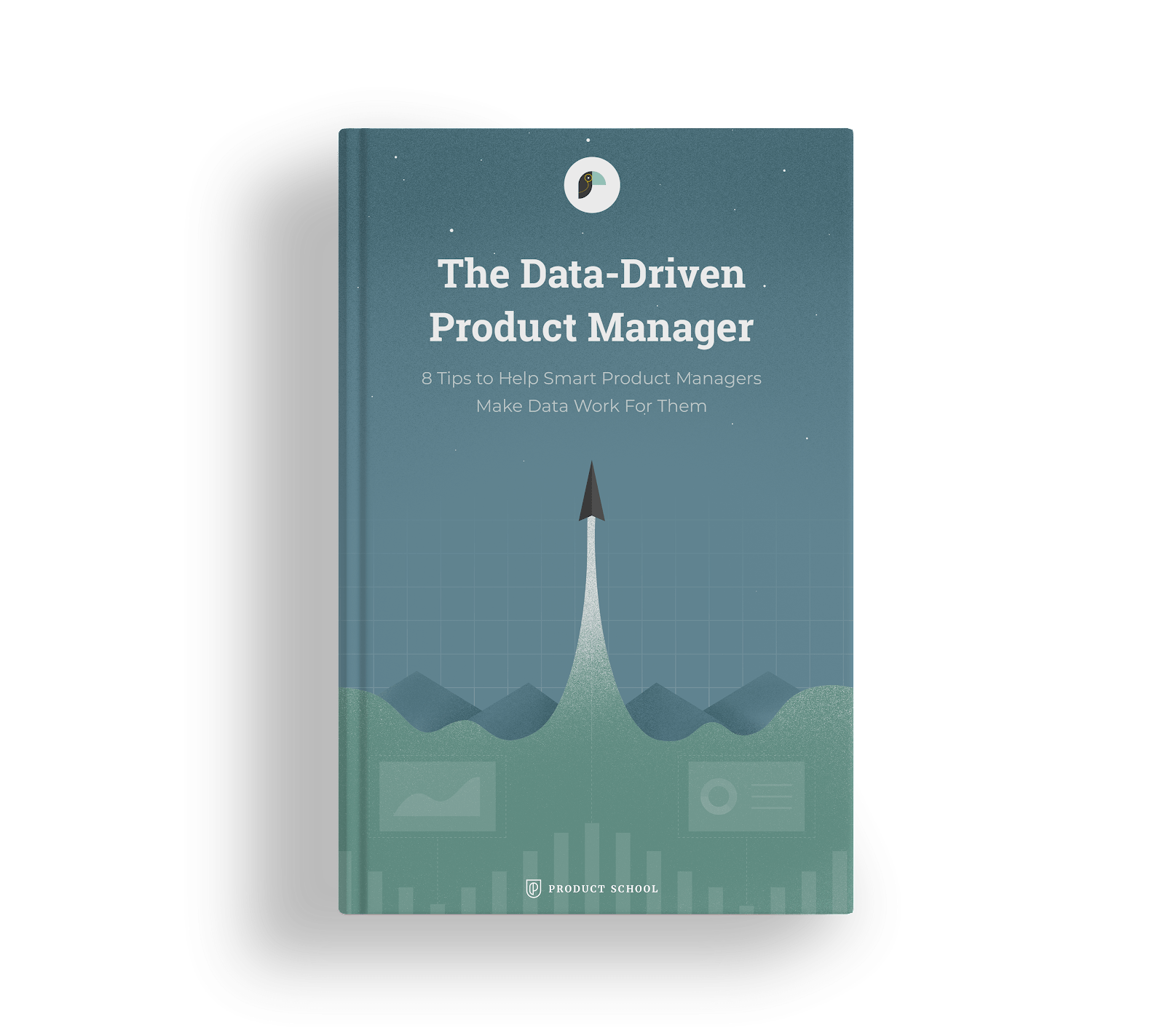
We’ve all heard that data is the new oil, but are we doing enough to leverage this precious resource?
A recent survey by the Business Applications Research Center (BARC) found that most data monetization initiatives are in their very early stages. Only 17% of respondent companies said these initiatives are integral to their business. Another 37% are somewhere in the planning phase. Meanwhile, a quarter of respondents said data isn’t being monetized right now, and it doesn’t look like it will be monetized in the near future.
These numbers paint a dismal picture, to say the least. Despite the immense potential of data currently housed in enterprises, most companies are struggling to realize its full value.
A report by McKinsey demonstrated precisely how big a role data could play in a company’s business performance. 45% of high-performing companies have been able to create new business models, thanks to data. For low-performers, this number falls to 36%. This points to a direct correlation between one’s data capabilities and measurable performance.
To stand out in a competitive market landscape, maximizing your data potential is absolutely necessary. This is particularly true for sectors such as retail, utilities, and manufacturing, all of which sit on massive repositories of data. Therefore, ISVs, software providers, and internal IT teams must analyze their current position to identify where data could make a difference and adopt embedded analytics to address these opportunities.
4 Ideas for Monetizing Data
In our experience at Toucan, there’s no one-size-fits-all model for data monetization. For example, some high-performers use data to expand their existing offerings, while others venture into entirely business territories. Collaborating with peers to create a shared data mart is also an option. We’ll extensively cover the option of creating new data products (fourth example) but we’re happy to introduce other ideas!
On the stakeholder’s side ownership, for data and analytics can lie with the CIO, CMO, CFO, CEO, or a dedicated Chief Data/Analytics Officer. Interestingly, McKinsey found that at a whopping 53% of high-performing companies, data and analytics is owned by the CEO themselves (compared to just 10% at average or low-performers).
So what are the steps you could take to obtain the maximum value from the available data? Here are four recommendations:
1. New partnerships built on data sharing
Multiple datasets working together will always give you more than the sum of their parts. This is why it makes sense to work with companies with access to similar types of data. For example, a retailer with data on product demand among customers can partner with a building management company that monitors footfall at leading shopping malls. This will result in business strategies geared for fast product movement and increased footfall in commercial spaces benefitting both entities.
McKinsey found that 29% of high-performers are already joining similar companies for data monetization endeavors, compared to just 16% of average or poor performers.
2. Optimize existing processes for efficiency gains
This is among the easiest moves to make for companies with a large number of data-heavy processes. For example, a multi-national contact center can gather data on employee performance to realign learning initiatives as per its revenue goals. A manufacturer can analyze equipment performance to predict wear-and-tear, saving maintenance costs. ISVs could look at user adoption records to equip their Customers Success schemes with the right enablement tools. The use cases are virtually endless.
3. Optimize business decision-making
This comes slightly later on in the maturity curve towards data monetization. Once all of the relevant datasets are in place, and the requisite analytics models are applied, companies can create interfaces that empower decision-makers. Primarily, this impacts C-level leaders as they look at entering new areas of business.

Servitization in the manufacturing sector is a classic example. It leverages the data generation capabilities of assets to move towards a serviced model, i.e., billing a customer for the usage of the product and not for its purchase. 32% of the high-performers report that data has significantly altered their long-term corporate strategy, compared to 18% of average or poor performers.
4. Build data-driven products and services
This idea should be on the radar of any company collecting data regularly, as well as ISVs catering to them. For instance, a manufacturer can adopt a data-driven price configuration system. This means that ISVs providing the ERP platform to that manufacturer must be equipped to embed analytics into their offerings, aiming for a shared vision toward data monetization.
According to McKinsey, high-performers will add new data services to their toolkit at a 4X faster clip than others. ISVs can partner with these leaders by featuring embedded analytics and self-service business intelligence in a big way when designing their product roadmap.
How to Define Monetization Use Cases?
The first step to effective data monetization for ISVs is taking stock of the datasets available. You are probably sitting on a pile of data that could prove to be of value. This includes:
- Data generated from user interactions with your product → This could give you insights into navigational pain points, missing features, behavior patterns, etc., determining the product’s non-functional requirements. For instance, any moment of truth that requires users to spend an inordinate amount of time could gain from a coaching tip.
- Data unrelated to your core technology → In data-driven companies, customers are likely to use your embedded analytics feature in myriad innovative ways. In fact, the best embedded analytics will equip users to do just this. Look at how third-party integrations, external analytics, AI, etc., are influencing your software. This could lead to whole-new ways to offer customers rich insights.
- Data on product-IT fitment → Most SaaS platforms don’t operate in isolation. Your customers could be using Slack for collaboration, Salesforce for CRM, Workday for HR, and so on. Data on these patterns can indicate new integration possibilities and which companies you need to partner with, ti generate the highest revenues.
Remember, identifying the data potential is only the first step. The insights must be checked against and validated by the customer’s experience. At this stage, your customer success team plays a major role, acting as that all-important channel of communication between the product team and the user. They can successfully negotiate which embedded analytics features should be prioritized and which ones can unlock the highest degree of monetization.
(if you’re interested in how customer success teams can enable data monetization, read our detailed write-up here).
What Does a Monetization-Ready Embedded Analytics Product Look Like?
Once you have identified the use case and requested the participation of customer success teams, you’re ready to start building a data product that takes your software to the next level. Here are five traits that any profitable data product will have, as we have learned from our years of experience at Toucan:

- Appealing: The UX and the overall look-and-feel must be in-sync with the latest design practices to capture the customer’s attention.
- Easy-to-use: Navigation should be equally simple for technical and non-technical users; here’s where you need data storytelling expertise.
- Shareable: Organic virality is an important trait for modern embedded analytics dashboards, increasing adoption rates and informing your future roadmap.
- Effortless: The user shouldn’t have to undergo a fresh installation or learning curve to start monetizing their data; white-label analytics that fits into your software’s existing UI is a good idea.
- Scalable: As your product grows, the embedded BI and analytics provided with it should grow in tandem, keeping up with user expectations.
The secret to achieving this successfully is by instituting a robust feedback-and-iteration loop. ISVs shouldn’t attempt to enable monetization from day one. This would only lead to a rushed, full-featured prototype, which is difficult to iterate. Instead, loop in your customer success teams to gather feedback from customers, and incrementally improve with every release.
At Toucan, we use Trello to create an agile development process with close collaboration with our customers (most recently, Ubisoft).
Closing Thoughts: Are You Pricing Your Embedded Analytics-led SaaS Correctly?
It can be difficult to know exactly how to price software that offers rich embedded analytics and data visualization capabilities. A key reason for this, is the nascent state of data monetization today, making it difficult to assign a measurable and repeatable value to datasets. For instance, a recent survey found that an overwhelming number of companies – ranging from large to mid-market and small – are yet to launch data monetization products. And despite its obvious benefits, only 38% use embedded BI, compared to 53% choosing more complex commercial analytical databases.
In other words, you need to consider a variety of factors before selecting a pricing model. Start by building confidence in your value proposition. Actionable information that transforms decision-making has inherent value. So, work with your customer success team to convey this across the user base.
Also, keep in mind that embedded analytics involves a lower engineering cost and faster iteration than a homegrown feature. This can give you a competitive edge in terms of pricing.
Finally, go back to the drawing board and define a new set of user personas. Given the massive potential of embedded analytics in data monetization, you are likely to uncover new and surprising user types. Keeping all of these elements in mind, you are ready to kickstart your journey towards data monetization and help customers cement their market leadership in today’s competitive business environment.





.webp)